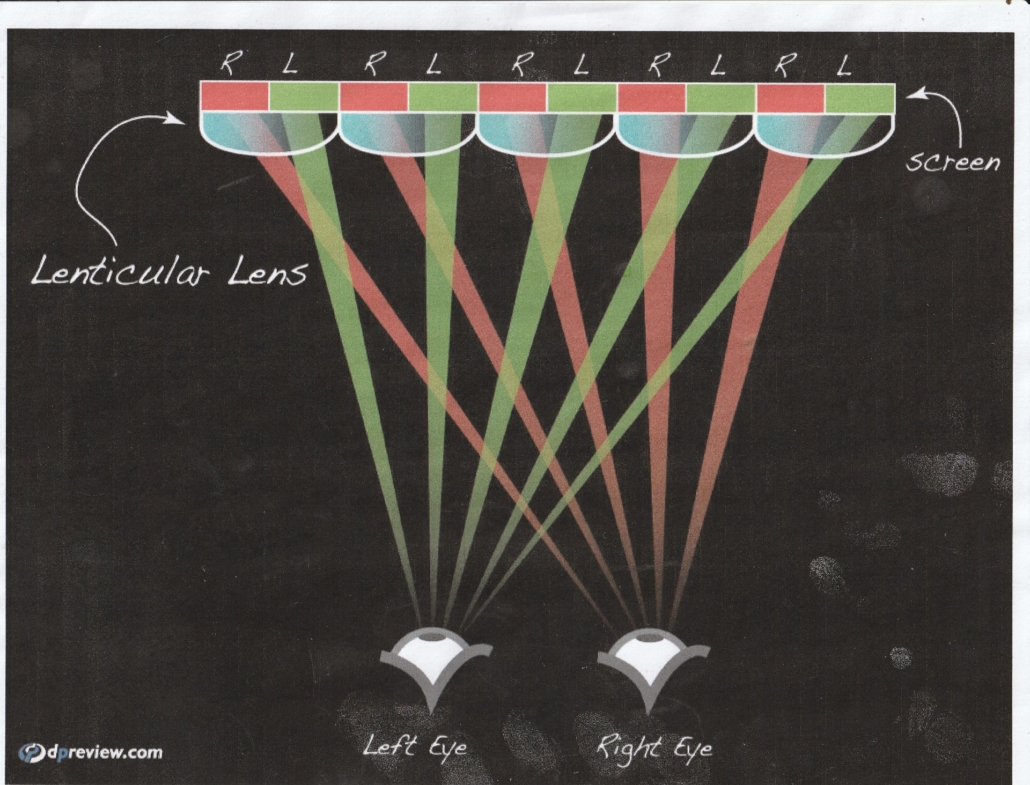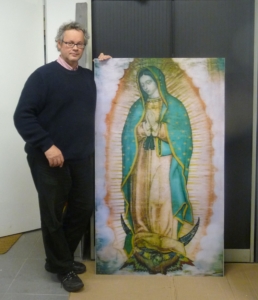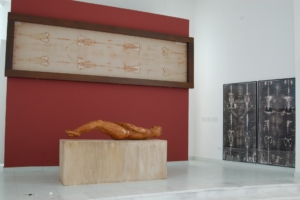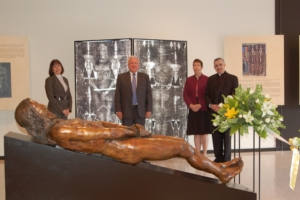A 3D Lenticular is produced by using a material that consists of very small (invisible) tubular lenses. The spectator will look at the 3D image through this layer of lenses and in this way, he will experience a 3D image.
The material works like an infinite amount of lenses next to each other. The original image behind them has been calculated and revised to suit these lenses. One image is the left view, the other the right view and the lenticular lens focuses these images into position for your left and right eye. Depending on the position of the eye, the lenses will offer a different view of the object that you are looking at. You will experience this as a 3D presence. (see photograph 1)

Photograph 1 – Working of 3D in lenticular imaging
A 3D Lenticular does not require a special light source (like a Hologram) to be put on display. The 3D images in the Lenticulars have been developed from the original 3D data base of the Shroud by Walter Spierings, Director of the Dutch Holographic Laboratory in Eindhoven, the Netherlands (see photograph 2). This is the same data base that has been used to manufacture the 3D life size holograms of the Shroud. So, the Lenticular will display the same 3D image albeit through a different technique.

Photograph 2 – Walter Spierings Director of Dutch Holographic Laboratory with lenticular of the Virgen of Guadalupe
We use these life-size Lenticulars with the front and the back of the body in expositions of The Shroud, and smaller size lenticulars when giving presentations.
See photographs 3 and 4.
 Life-size lenticulars of front and back of body. Expostion Panama
Life-size lenticulars of front and back of body. Expostion Panama

Life-size lenticulars of front and back of body. Expostion Univ. of Anahuac, Mexico D.F.
